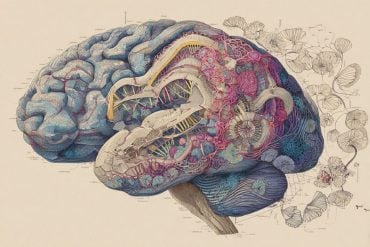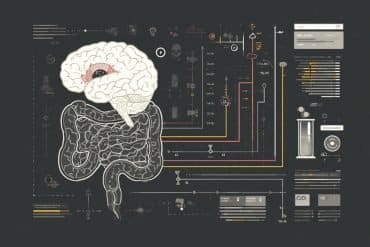Summary: Researchers have discovered the mechanism behind the fainting disorder, Postural Orthostatic Tachycardia Syndrome.
Source: Monash University.
Monash University researchers have discovered the mechanism underlying the fainting disorder, Postural Orthostatic Tachycardia Syndrome (POTS), the condition famously affecting the former lead singer of The Wiggles.
POTS is a disorder characterised by orthostatic intolerance – having difficulty in becoming upright, particularly when standing up from a lying-down position, when a greatly reduced volume of blood returns to the heart. Symptoms can include feeling light-headed, fainting, fatigue and slurred speech. Interestingly, eighty per cent of those with the condition are women.
Greg Page AM, the “Yellow Wiggle,” left the popular children’s music group in late 2006 for some years after developing symptoms associated with POTS, later dubbed ‘Wiggles Disease’.
Monash Central Clinical School (CCS) investigators Professor Sam El-Osta and then PhD student Abdul Waleed Khan – who joined the CCS from the Baker Heart and Diabetes Institute with the opening of the new Department of Diabetes at Monash – have revealed that the problem has an epigenetic, rather than genetic, basis.
While the gene implicated in POTS – norepinephrine transporter (NET) – was known for several decades, past research had failed to find a genetic mutation responsible for symptoms of POTS.
The CCS scientists discovered chemical marks on the NET gene responsible for repressing or turning the gene off. They delved further and found that a repressor protein called MeCP2 together with a non-coding RNA (let-7i) was critical in the gene silencing.
In another exciting development, the researchers, collaborating with the Baker Institute’s Professor Murray Esler, demonstrated that the NET gene could be re-activated by using the FDA approved drug Vorinostat in blood cells derived from POTS study participants.

“The rationale behind our research into POTS was to understand the regulatory mechanism to piece together some of the key molecules involved in NET gene reactivation,” Professor El-Osta said.
“The drug we used in the study targets specific molecules in the cell to restore NET gene function.”
POTS is a relatively rare condition but the findings may have far wider application.
“This has important therapeutic implications. We have commenced clinical epigenomics studies to assess the generality of the mechanism and therapeutic potential as it pertains to essential hypertension, panic disorder and depressive illness.”
Professor El-Osta is now working with Professor Esler’s team, which is recruiting patients for a much larger study to test the broader application of the compounds investigated, and others like it, that may also reactivate the NET gene.
Dr Khan is doing further postdoctoral work in Stockholm.
Authors include: Khan AW, Ziemann M, Corcoran S, Harikrishnan KN, Okabe J, Rafehi H, Maxwell SS, Esler MD, and El-Osta A.
Source: Monash University
Image Source: NeuroscienceNews.com image is adapted from the Monash University press release.
Original Research: Full open access research for “NET silencing by let-7i in postural tachycardia syndrome” by Abdul Waheed Khan, Mark Ziemann, Susan J. Corcoran, Harikrishnan K.N, Jun Okabe, Haloom Rafehi, Scott S. Maxwell, Murray D. Esler, and Assam El-Osta in JCI Insight. Published online March 23 2017 doi:10.1172/jci.insight.90183
[cbtabs][cbtab title=”MLA”]Monash University “Fainting Disorder Mechanism Identified.” NeuroscienceNews. NeuroscienceNews, 26 March 2017.
<https://neurosciencenews.com/fainting-disorder-neurology-6293/>.[/cbtab][cbtab title=”APA”]Monash University (2017, March 26). Fainting Disorder Mechanism Identified. NeuroscienceNew. Retrieved March 26, 2017 from https://neurosciencenews.com/fainting-disorder-neurology-6293/[/cbtab][cbtab title=”Chicago”]Monash University “Fainting Disorder Mechanism Identified.” https://neurosciencenews.com/fainting-disorder-neurology-6293/ (accessed March 26, 2017).[/cbtab][/cbtabs]
Abstract
NET silencing by let-7i in postural tachycardia syndrome
While strongly implicated in postural tachycardia syndrome (POTS), considerable controversy exists regarding norepinephrine transporter (NET) loss of function. POTS is characterized by the clinical symptoms of orthostatic intolerance, lightheadedness, tachycardia, and syncope or near syncope with upright posture. Abnormal sympathetic nervous system activity is typical, of a type which suggests dysfunction of the NET, with evidence that the gene responsible is under tight epigenetic control. Using RNA of isolated chromatin combined with massive parallel sequencing (RICh-seq) we show that let-7i miRNA suppresses NET by methyl-CpG-binding protein 2 (MeCP2). Vorinostat restores epigenetic control and NET expression in leukocytes derived from POTS participants.
“NET silencing by let-7i in postural tachycardia syndrome” by Abdul Waheed Khan, Mark Ziemann, Susan J. Corcoran, Harikrishnan K.N, Jun Okabe, Haloom Rafehi, Scott S. Maxwell, Murray D. Esler, and Assam El-Osta in JCI Insight. Published online March 23 2017 doi:10.1172/jci.insight.90183







